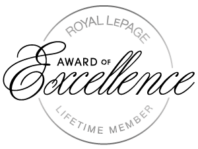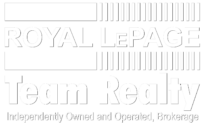Staying Objective: Top 10 Problems for Home Buyers to look for
Remaining objective can be a difficult task for buyers when viewing homes. It’s easy to fall in love with a home’s appearance, blind to problems that may make it unsuitable.
While aesthetics can be an important consideration, it’s necessary to look beyond window-dressing. A qualified home inspector should be hired before purchasing a home, but there are areas that you the buyer can examine on your own. This will help shorten your list of potential homes that you may be considering and reduce the likelihood that a home inspector will reject it as unsafe or unsuitable.
Here are some considerations and common problem areas to look for:
1. General upkeep: Much can be surmised from the general state of the home. Is the home clean? Are lawns left uncut? Are the walls chipped and in need of paint? If smaller chores have been ignored it may be an indication of a broader disregard for home maintenance.
2. Water leaks: Check ceilings and drywall for stains, bulges and other signs of water damage. Water that works its way inside via a leaky roof or a cracked foundation can rot wood, create mildew and mold, destroy possessions and can be expensive to repair.
3. Does it work?: Test lights, faucets, the heater, air conditioning, major appliances (that are to be included with the home) – even flush the toilets to ensure everything is working as it should.
4. Floors: As you walk across the floors be aware of ‘spongy’ (soft or springy) sections. Excessive squeaking and uneven, bumpy floors may also be indicative of expensive forthcoming repairs.
5. Doors and windows: Check that doors and windows fit snugly in their jambs and operate smoothly. Look for flaked paint and loose caulking. If the wood around windows and doors is not protected from moisture, it can rot away. Feel for drafts in these areas too.
6. Poor drainage: On a wet day walk around the yard and look for areas where water collects. This can be an especially bad sign if there are soggy areas near the home’s foundation.
7. Grout and caulking: If the grout and caulking around bathroom and kitchen tiles is loose and crumbly, there is a good chance that water is finding its way into the wall or under the floor.
8. Structural: Although this is definitely an area where you want the services of a qualified home inspector, you can get an idea about possible structural problems if you see deep cracks in the foundations or loose mortar and bricks.
9. Miscellaneous concerns: Furniture Placement Naturally, one the most important factors will be determining if the house suits your family’s needs. If you do not want to replace all of your furniture, make sure it will fit into the rooms of the new house. This is difficult to do by eye, so be sure to bring a measuring tape.
10. Storage space. If you are moving from a home with large closets and a shed, make sure your new house is able to store an equivalent amount of belongings.
Keeping these problems in mind when you go through a home and discussing your needs and wants with a trusted Realtor may help you avoid falling in love with a home that doesn’t meet your expectations. Happy house hunting! For more information conatct one of our sales representatives.






The trade marks displayed on this site, including CREA®, MLS®, Multiple Listing Service®, and the associated logos and design marks are owned by the Canadian Real Estate Association. REALTOR® is a trade mark of REALTOR® Canada Inc., a corporation owned by Canadian Real Estate Association and the National Association of REALTORS®. Other trade marks may be owned by real estate boards and other third parties. Nothing contained on this site gives any user the right or license to use any trade mark displayed on this site without the express permission of the owner.
powered by WEBKITS





